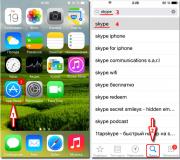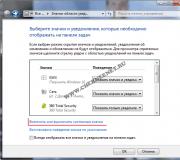AppData - what lies in this mysterious directory and how to get rid of everything unnecessary in it
The Windows operating system hides many secrets, but some of them are more interesting than others, and if you undertake to untangle them, you can get undeniable benefits.
Take, for example, a directory that first appeared in Windows Vista and that few people suspect exists. The reason is that it is hidden from the eyes of users, as it stores extremely important system information. However, understanding its nature can help you save precious disk space on your primary partition and possibly improve overall system performance.
AppData (or Application Data) is a hidden (by default) system folder, a subdirectory of the Users folder containing the personal files of all registered users. The folder contains all the information generated by installed programs on the computer and is invisible to users, because (at least in theory) the files stored in it should not be of any interest to them.
However, reality is often at odds with Microsoft's original intent. With a long and active use of Windows without reinstalling the system, the size of this folder will grow rapidly, and soon you may face a lack of free space on the system partition - especially if you are using a relatively modest SSD device, on which every megabyte matters.
Let's take a closer look at the structure of AppData and find out which of the files stored in this folder are critical and which are not.
As mentioned, AppData is hidden by default, so you'll need to change some Windows system settings to get to it. To do this, open the "Control Panel" and go to the "Appearance and Personalization" section. Then open the "Folder Options" dialog box and on the "View" tab in the list of options, find the "Hidden files and folders" option. Now just change the default settings ("Don't show hidden files, folders and drives") to "Show hidden files, folders and drives".

This will make visible not only AppData, but a number of other system directories and files, as well as files and folders that were hidden by you.
AppData is located in the C: \ Users folder, but note that each logged in user has their own AppData directory, so look for a folder in the directory with your username.
By default, this directory contains three subdirectories: Local, LocalLow, and Roaming. Each of them stores data of different profiles.
Local contains files created by the installed programs. This information is strictly specific to a particular computer user and cannot be transferred to a new machine. Here you will also find a folder named Microsoft containing the history of all Windows activity.
Local also contains a folder with temporary files (Temp) created during the work of various applications. You can safely delete its contents completely, since very often these records are unnecessary and only take up disk space.
Folder Roaming stores certain user files that can be transferred from computer to computer.
Folder LocalLow is intended primarily for buffered data generated by Internet Explorer, Java and Adobe programs.
Quite often, these AppData subdirectories accumulate quite a lot of software "waste", which can grow to incredible sizes over time. To clean up the system of all these junk files, you don't have to go deep into AppData. You can get to the folder with temporary files to be deleted in an easier way.
If you write in the address bar of the explorer shell: history and press Enter, you will instantly find yourself in the Internet Explorer history folder. shell: cache opens a directory with an offline browser buffer, shell: cookies shows all saved cookies, and with shell: sendto you can remove and add shortcuts to the Send menu.
If you want to explore the contents of the AppData folder in more detail, a small but powerful tool can be invaluable. It will quickly scan your hard drive, and then visualize the distribution of the files recorded on it in a very attractive graphical form, so you can easily navigate if one or a large group of similar files takes up too much space.

Well, the easiest and best way to clean not only AppData, but also all unnecessary on the hard disk, is still to periodically scan the system with the wonderful CCleaner tool from Piriform.



